Greymare bushfire: Strike team called in to offer support, reprieve in rough terrain and hot temperatures
A strike team called to provide support to fire crews battling an out of control bushfire in Southern Queensland has arrived to face harsh conditions and terrain. Here’s what they’ll face.
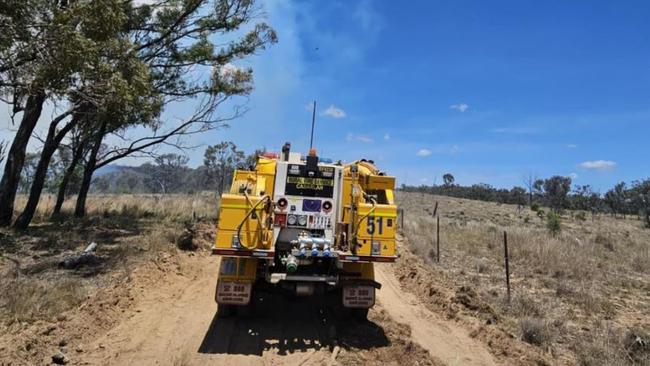
Warwick
Don't miss out on the headlines from Warwick. Followed categories will be added to My News.
Fireys will face rugged terrain and scorching temperatures as they combat an out of control blaze in the state’s south.
The fire at Greymare, in the Southern Downs region, has a perimeter of roughly 22km and was first reported late last week.
With the week seeing average temperatures of a scorching 36C and winds picking up, the possibility of the fire spreading was alarming for fire authorities.
As of Wednesday, several Rural Fire Service strike teams made the trip to the area, to provide much needed relief to local officers who have been battling the blaze since last Thursday.
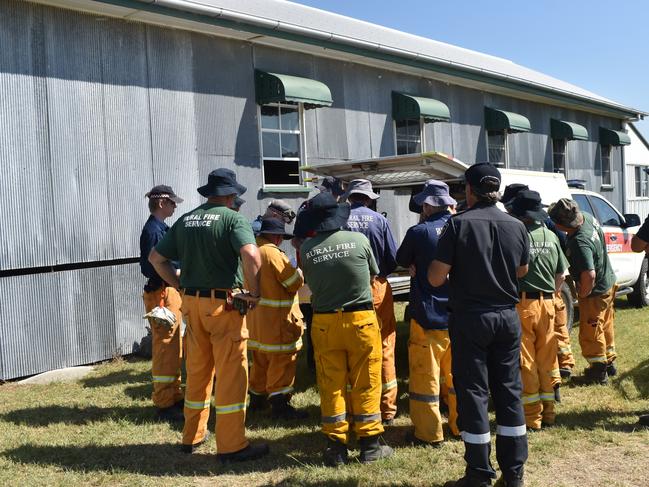
Incident controller at Greymare Warren Dean said the fire likely started on Thursday last week by a lightning strike, and currently is about 2200ha.
“Today we are working on strengthening the containment line and call it as under control,” Mr Dean said.
“Over the weekend the winds have driven the fire, as with the fires around the place this hot, dry and windy weather can drive any sparks and cause it to go fast.
“We’re always prepared for the next one, we’re trying to get this fire under control so if a lightning strike from an upcoming predicted storm causes another fire (we’ll be prepared).”
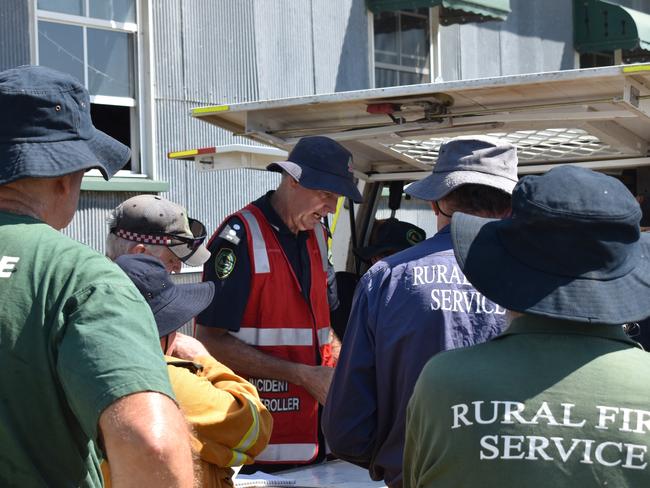
Mr Dean said storms can be more of a hindrance, with lightning often striking on elevated positions where crews tend to stay, and what little rain that comes from the storm barely covering the fire zone.
“It’s only a matter of time before the next one, so it’s good to have the strike force in to give our local crews a bit of a rest and get a bit of leeway before it ramps up,” he said.
“If it continues with this dry heat and we don’t see widespread rains this summer, the fire threat will only get worse and worse. You can’t predict it, we’re in the lap of the gods.”
Fireys will have to navigate rugged and mountainous slopes, play diplomate to local farm owners and graziers and even wrangle cattle as they combat the blaze.
The incident controller urged residents across the region to remain prepared and have a fire plan going into the summer.
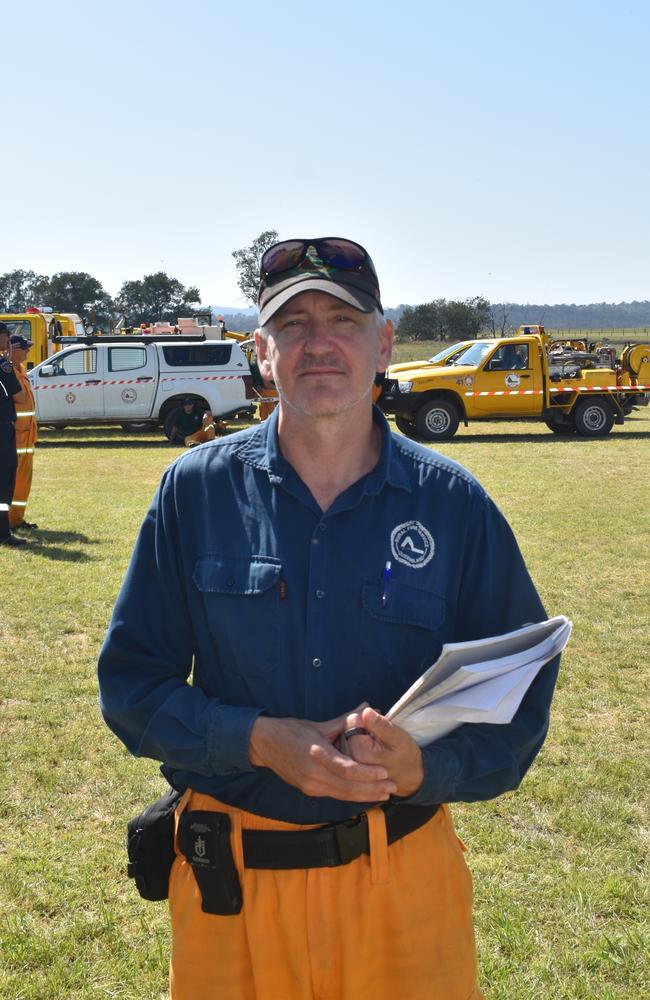
First Officer of Mapleton RFS Derek Cameron came with the strike team to help relieve pressures on local fireys and said the terrain was a difficult challenge.
“The terrain is quite mountainous and hilly so we have to be careful with personnel and vehicles, and the temperatures have been very hot we must make sure the crews are hydrated,” he said.
Mr Cameron said the strike team has been using drones and aerial mapping software to see inaccessible areas of the fire, helpful for this terrain.
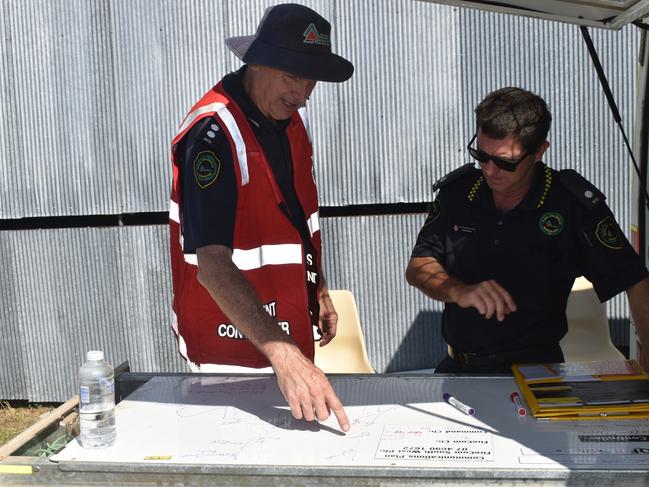
“It’s always a concern the fire could still spread, but we will need to have the confidence to leave the fire so it won’t start up again,” he said.
“We’re happy to come down and give whatever assistance to local crews, give them a bit of a rest and helps some of our guys to get a little bit more experience.
“The important thing for us coming from out of the area is listening to local crews and landowners who know the area, it’s good to come in fresh because some of these crews could have been out fighting for weeks on end and give them a day off.
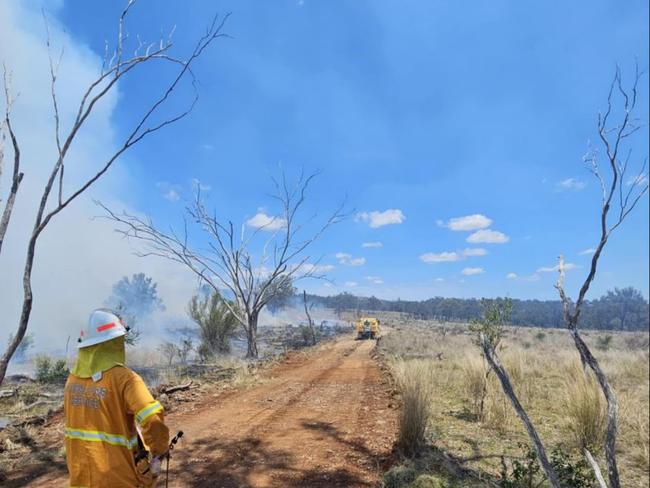
“At the end of the day we’re all volunteers so it’s just nice to help out.”
The crew’s arrival comes after a horror blaze in the state’s west, at Dirranbandi, quickly spiralled out of control.
The first crew arrived on scene at 2.50pm on Tuesday, and by 4.30pm there were three crews on scene, with further 11 on route.




